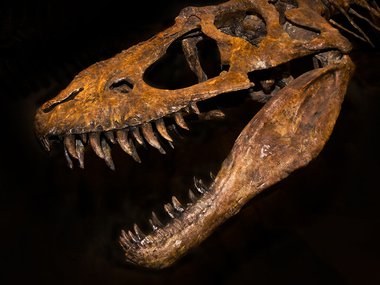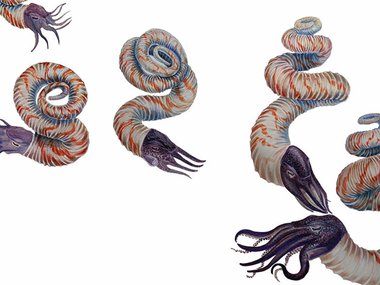What’s in a Name: The Science behind What We Call Things
Juliet may have thought names were arbitrary when she asked “What’s in a name? That which we call a rose by any other name would smell as sweet.” But scientifically, names certainly play an important role.
People like to name things. Beyond naming children and pets, many of us give names to inanimate objects such as stuffed animals and our cars. (Our Director of Playful Learning and Inquiry's car is named Violet Beauregard, in case you were wondering). Naming is a way of placing order on our world by helping us differentiate between things. It also helps others know what we are referring to when having a conversation.
Scientific nomenclature is the term that refers to how scientists name things. It is a very specific process with strict rules that scientists must follow. Why is this important? Think about your friends and relatives for a moment. How many people in your circle share the same name? For instance, I know several different Jennifers. If we were all in a room together, and I called out “Jennifer,” they would probably all answer me. How confusing! I would need to be very specific in order to get the attention of the correct Jennifer, perhaps by using a last name.
Preventing confusion by being specific is important to scientists, too. Every organism in the world is assigned a unique binomial (meaning two names) name. Let’s use humans as an example. Our species name is Homo sapiens. The first word “Homo” is the genus. One genus can contain several related organisms in it. For example, extinct human ancestors in the genus Homo include Homo neanderthalensis and Homo erectus.
The second word “sapiens” is the species modifier—sort of like a last name for Jennifer in the example above. Combined, they make up a unique binomial species name: Homo sapiens. No other organism in the world can have that same modifier. Because each organism has a unique name, researchers anywhere in the world know which organism is being discussed as they all use the same terms. Nice, right?! But it wasn’t always this way.
Before the 1700s, there were no standard scientific naming rules. People used what we would refer to as common names for an organism they were describing. One person might refer to a particular tree as a white oak but another person down the road might have refer to the same tree as a rounded oak, and a third may have referred to it as a rough oak. To make things even more confusing, yet another person might use the term white oak for a completely different tree! This naming problem was solved in the 1700s when Swedish naturalist Carl Linnaeus developed the system scientists use today of assigning a unique binomial name to an organism that people all over the world would use, and more importantly recognize!
When a scientist discovers and describes a new species, they get the honor of naming it. First they determine what other organisms it might be related to so that they can assign it to an existing genus or define a new genus if the organism is unique enough for its own. Then they will assign a species modifier to create the binomial species name. The names often—but not always—use Latin or Greek words that describe characteristic of the species. Homo sapiens, for example, is Latin for “wise man.”
Sometimes a name refers to where the organism was found. Xiongguanlong baimoensis is a small fuzzy dinosaur whose name translates into “Grand Pass dragon from white ghost castle.” “Long” is Chinese for dragon, and it was found in the Grand Pass, Jiayuguan region of China near a rock formation referred to as the white ghost castle. “Bai mo “ is white ghost in Chinese.
Sometimes scientists have fun with naming new species. There is a land snail from Fiji with the species name Ba humbug, a shiny beetle named Gelae baen (say it out loud a few times!), and there is even a fossil trilobite named Han solo!
Usually, the rules for naming things state that the first scientific name that appears in print takes precedence over any other names assigned to the same organism. So, if two scientists independently are studying the same new organism and assign different names to it, the first name in print would be the one that ultimately belongs to the new species. However, there are exceptions to this as in the case of “tyrant lizard king” Tyrannosaurs rex.
Early in the days of paleontology, fossils were being dug up fast and furious and assigned names just as quickly. Inevitably, some of the newly named fossils ending up being the same critter. The first-to-print name of a fossil that we now know as a T. rex was given the name Manospondylus gigas in 1892. Lucky for us, in January 2000 the International Commission on Zoological Nomenclature (ICZN), the organization that compiles the rules for naming animals, passed a ruling saying that a name that’s been considered valid for more than fifty years can’t now be replaced. I’m totally on board with this because Tyrannosaurus rex is WAY too awesome to change!
The duel-name situation happened to another well-known dinosaur, “thunder lizard” Brontosaurus. Here’s the short version: Brontosaurus was the dinosaur that was, wasn’t, and then was again!
Brontosaurus was first discovered in the 1870s during the so called “Bone Wars” between paleontologists E. D. Cope and O. C. Marsh. These two rivals frequently named a new species whenever a new fossil turned up without a close inspection of the details. In this instance, Marsh described and named two different species: Apatosaurus (1877) and Brontosaurs (1879) based on skeletons he found. In 1903 scientist Elmer Riggs looked at the skeletons of Apatosaurus and Brontosaurus and decided they were too similar to be different species. Because Apatosaurus was the first named in the literature, its name was the one scientists had to use for the animal. Brontosaurus was no more. In 2015, however, an analysis of more than 81 skeletons suggested that there were enough differences to designate them as distinct dinosaurs after all! Brontosaurus is back baby—at least for now!

